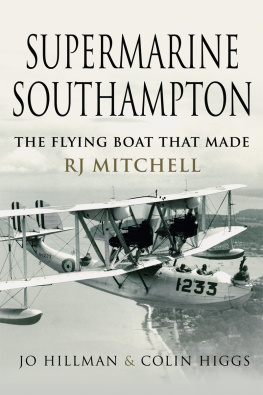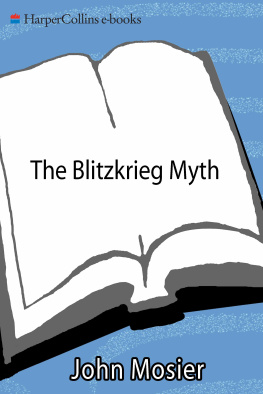First published in Great Britain in 2017 by
PEN & SWORD MILITARY
An imprint of
Pen & Sword Books Ltd
47 Church Street
Barnsley
South Yorkshire
S70 2AS
Copyright John J. Eddleston, 2017
ISBN 978-1-47387-054-3
eISBN 978-1-47387-056-7
Mobi ISBN 978-1-47387-055-0
The right of John J. Eddleston to be identified as the author of this work has been asserted by him in accordance with the Copyright, Designs and Patents Act 1988.
A CIP catalogue record for this book is available from the British Library.
All rights reserved. No part of this book may be reproduced or transmitted in any form or by any means, electronic or mechanical including photocopying, recording or by any information storage and retrieval system, without permission from the Publisher in writing.
Pen & Sword Books Ltd incorporates the imprints of Pen & Sword Archaeology, Atlas, Aviation, Battleground, Discovery, Family History, History, Maritime, Military, Naval, Politics, Railways, Select, Social History, Transport, True Crime, and Claymore Press, Frontline Books, Leo Cooper, Praetorian Press, Remember When, Seaforth Publishing and Wharncliffe.
For a complete list of Pen & Sword titles please contact
PEN & SWORD BOOKS LIMITED
47 Church Street, Barnsley, South Yorkshire, S70 2AS, England
E-mail:
Website: www.pen-and-sword.co.uk
CHAPTER ONE
1939
By the dawn of 1939 citizens throughout Britain knew that they were living in difficult and threatening times and that the future was most uncertain. Adolf Hitler had come to power in 1936 and it soon became clear that he had expansionist designs outside the German Reich. He consolidated his position over the next few years and in March 1938, the Anschluss combined Austria with Germany. This in itself did not satisfy Hitler and it was soon evident that he had ambitions concerning other territories.
On 30 September 1938, the Munich Agreement was signed by Germany, France, the United Kingdom and Italy allowing Hitler to annex the Sudetenland. The end of the year saw the infamous Kristallnacht pogrom and the increase in the persecution of the Jews. Many people in Britain knew where all of this would inevitably lead, even though they hoped fervently that war with Germany might be avoided.
In Southampton, 1939 opened with news of a local hero with four legs! Don, a 5-year-old Dalmatian, lived with his owner, Mrs Wheeler, in Rushington Lane, Totton and on New Years Day he saved his mistresss home, and his own life.
Mrs Wheeler, a teacher, had gone out leaving Don alone in the house. A nice fire was burning in the grate and, apparently, one of the coals fell out and started a fire on a mat. Don jumped onto a chair, took the catch of a steel-framed window in his teeth, pulled it down, opened the window and jumped out into the street, barking furiously. This attracted the attention of Mr Matthews who lived next door and, going to check what all the fuss was about, saw smoke coming from the house. He then dashed back into his own house, collected a fire extinguisher and brought the blaze under control. The walls and ceiling of the room were blackened and an armchair was destroyed, but there is no doubt that Dons action had saved the day.

Don, the dog who saved his owners home in January 1939.
Just a few days later, there was news of another local hero and this too was a dog. Rough, an 8-month-old terrier, had barked loudly and raised the alarm when thieves broke into Mr Bradleys tobacconist shop on Commercial Road. The noise frightened the intruders and the potential thieves escaped empty handed. Rough was given a large juicy bone as a reward.
It was also during the first few days of the year that two privates, William Bradley and William Davis, both of the Royal Army Medical Corps (RAMC) and based at the Royal Victoria Hospital in Netley, appeared in court charged with being drunk and disorderly, close to the hospital. The offence had taken place on 30 December 1938 and after being told that they were to be arrested, both of the soldiers assaulted Constable Dolby. For that offence, both men received prison sentences of three months.
It seemed that Southampton docks was not the safest place to be in the first month of 1939. On 11 January, five men were injured in an accident when a motor launch on the boat deck of the Cunard White Star liner Aquitania , berthed at the Ocean Dock, fell from its moorings onto the deck striking a number of men working beneath. Michael Costello and Noel Gibson escaped physical injury but suffered the effects of shock. Harry Fluellen sustained head injuries whilst William Ahern suffered a number of fractured ribs. The fifth man, David Kennedy, hurt his left shoulder. Fortunately, all the men eventually made a full recovery.
Later in the same month, the local populace read of a tragic accident at the docks. Arthur Edward Meech of Whites Road, Bitterne, was employed as a shunter for the Southern Railway. On 13 January he was riding on one of the buffers of a wagon that was being shunted by an engine named Honfleur . The engine was pushing the wagon towards Millbrook when a taxi, driven by William John Oakley of Bryanston Road, also in Bitterne, passed in front of the wagon. The rear end of the cab just caught the wagon where Meech was standing which caused him to lose his balance and fall onto the line. The engine then ran over him, killing him instantly. An inquest, lasting two days and ending on the 21st, returned a verdict of accidental death.
There was further drama at the docks on the 26th when a massive 60-ton crane crashed, trapping the driver, 64-year-old Alfred James John McGregor. Workmates had to tear open the cabin and extricate McGregor before a fire could engulf him. Rushed to hospital, he was found to be suffering from an injury to his right shoulder, a wound on his forehead and burns on his right arm. Fortunately for him, the crane had toppled onto the dock itself. Had it fallen the other way, into the water, McGregor would certainly have drowned.
There had been a great fall of snow in Southampton on Saturday, 28 January and many people were sheltering in doorways, trying to avoid the worst of it. One such person was 54-year-old Alice Lottie Watts of 2 Landsdowne Road, Millbrook. She was in the town centre, in the doorway of the Royal Anchor Hotel in Commercial Road, at around 10.00pm, waiting for her bus to arrive.
Seeing the bus approaching, Alice dashed out into the foul weather but had only gone a few steps when she slipped on some slush and fell face-first onto the pavement, cracking her forehead in the process. Some people had seen the accident and went to Alices aid. She was picked up and taken into the Royal Anchor where she was given first aid but it was clear that she would need specialist treatment so she was taken to the hospital where she lost consciousness so was then admitted. Her husband, an ex-policeman named William, was playing in a police band at the Guildhall where there was a Burns Night dance taking place. He was summoned to the hospital and was at Alices bedside when she passed away at 1.00am the following day.













